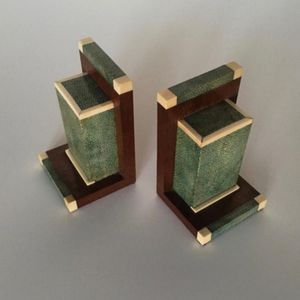Shibayama Rosewood Elephant with Intricate Beadwork
You must be a subscriber, and be logged in to view price and dealer details.
Subscribe Now to view actual auction price for this item
When you subscribe, you have the option of setting the currency in which to display prices to $Au, $US, $NZ or Stg.
- Carnelian Glass - Carnelian glass is a type of glass that is colored red, orange, or brownish-red. It is made by adding iron oxide to the glass mixture. The color of carnelian glass can vary depending on the amount of iron oxide that is added, as well as the firing temperature. Carnelian glass is often used to make beads, jewellery, and other decorative items. It can also be used to make stained glass windows and other art objects. Carnelian glass is sometimes called "carnelian chalcedony" or "carnelian quartz."
Carnelian glass was first made in the Roman Empire. It was also made in ancient Egypt, Greece, and Mesopotamia. Carnelian glass was not made again until the Renaissance, when it became popular again. Today, carnelian glass is made in many countries around the world. - Ivory - Ivory is a hard white material that comes from the tusks of elephants, mammoth, walrus and boar, or from the teeth of hippopotamus and whales. The ivory from the African elephant is the most prized source of ivory. Although the mammoth is extinct, tusks are still being unearthed in Russia and offered for sale.
Ivory has been used since the earliest times as a material for sculpture of small items, both in Europe and the east, principally China and Japan.
In Asia ivory has been carved for netsuke, seals, okimono, card cases, fan supports, animals and other figures and even as carved tusks.
In the last 200 years in Europe ivory has been used to carve figures, for elaborate tankards, snuff boxes, cane handles, embroidery and sewing accessories, in jewellery and as inlay on furniture. Its more practical uses include being used for billiard balls, buttons, and a veneers on the top of piano keys.
The use and trade of elephant ivory have become controversial because they have contributed to Due to the decline in elephant populations because of the trade in ivory, the Asian elephant was placed on Appendix One of the Convention on International Trade in Endangered Species (CITES), in 1975, and in January 1990, the African elephant was similarly listed. Under Appendix One, international trade in Asian or African elephant ivory between member countries is forbidden. Unlike trade in elephant tusks, trade in mammoth tusks is legal.
Since the invention of plastics, there have been many attempts to create an artificial ivory - Rosewood - A dense timber that varies in shade to very light brown to almost black. When rosewood is cut and sanded the colour of the timber will turn black, and after polishing and exposure to daylight, the surface will gradually lighten over time to light brown with black streaks.
The name comes from the odour emanating from the timber when it is planed, sanded or cut.
Rosewood was very popular for use in Victorian furniture in the second half of the 19th century, and at that time most of the rosewood was imported from Brazil. However it also grows in India and Indonesia.
It is used in the sold for chairs and table legs, but for carcase furniture such as side cabinets and bookcases, and for table tops it is always used as a veneer. - Mother-Of-Pearl - Mother-of-pearl, technical name "nacre", is the inner layer of a sea shell. The iridescent colours and strength of this material were widely used in the nineteenth century as an inlay in jewellery, furniture, (especially papier mache furniture) and musical instruments.
In the early 1900s it was used to make pearl buttons. Mother-of-pearl is a soft material that is easily cut or engraved.
Nowadays it is a by-product of the oyster, freshwater pearl mussel and abalone industries.
This item has been included into following indexes:
Visually similar items

A large carved Buddha head, with the long ears Flaring out at the bottom, Tight curls and flamed finial, Thailand, height 52 cm, 20 cm square

Two Georgian Chamberlains miniature pieces, including covered sugar, & cup. Both with gilded decoration on blue ground. Both hand signed Chamberlains Worcester. Height 5 cm (cup).

Edwardian dumb waiter 103 cm wide, 42.5 cm deep, 108.5 cm high

Pair of shagreen, bone and mahogany bookends, c. 1925, of architectural form, height 16 cm
